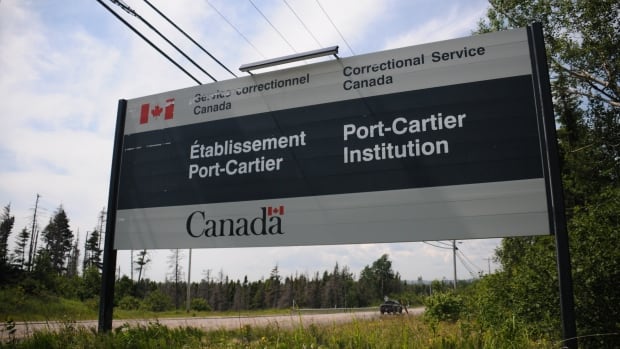
The Union of Canadian Correctional Officers (UCCO) criticized several shortcomings linked to the “historic” evacuation of 223 inmates from Port-Cartier, a maximum-security prison in Quebec’s Côte-Nord region.
Last Friday, Quebec’s fire protection agency, known as SOPFEU, and Quebec’s Public Security Ministry warned that the penitentiary was located in an area threatened by forest fires and that the evacuation would have to be carried out quickly as the blaze was closing in and only 11 kilometres away.
While 1,000 Port-Cartier residents had already left their neighbourhoods, Correctional Service Canada and more than 70 officers evacuated 223 inmates, many with maximum-security clearances, to other federal institutions several hundred kilometres away.
Union regional president Mike Bolduc said there was a limited amount of equipment — most notably handcuffs — that could have jeopardized the safety of correctional officers.
“Penitentiaries have emergency plans. But were we ready for a complete evacuation of a facility like this? I’d say no,” he told Radio-Canada’s Bonjour la Côte.
“The plan is there on paper, but in practice, it’s two different things.”
Prison says transfer was ‘very safe’
In an interview on ICI Première, the union representative revealed that many of the inmates were tied up with tie wraps, as correctional officers did not have enough handcuffs and foot chains to completely immobilize them during the transfer.
Bolduc added that some of the inmates had managed to break their self-locking fasteners during their transfer to the Donnacona and Sainte-Anne-des-Plaines penitentiaries.
“In my opinion, regardless of the threat and risk assessment, maximum-security inmates should have been handcuffed at all times to ensure everyone’s safety. They should learn from this mistake and have equipment for every inmate, especially in remote areas,” said Bolduc.
But the prison’s executive director, Martin Foucher, said that the use of self-locking restraints is an “authorized” and normal method of restraint, which is also used by other correctional services.
However, he admitted that they didn’t have “all the resources to [handcuff] them to their feet.”
Foucher also said the vans were equipped with individual cells to isolate the inmates. The union argues that was only the case for some of the vehicles.
While he said the operation was risky, Foucher insists that Port-Cartier’s operation was ”planned” and “very safe.”
“In recent weeks, we had already prepared our entire contingency plan in connection with the [fire] assessment. We were ready,” said Foucher on Radio-Canada’s Bonjour la Côte.
He also said the convoys of correctional services vans were also escorted and supported by teams from the Sûreté du Québec and the Royal Canadian Mounted Police.
When asked if he was present during the operation, Foucher acknowledged that he was not in Port-Cartier and managed the evacuation remotely.
He said him not being physically present had no effect on how the evacuation unfolded.
Concerns about overcrowding
Catherine Latimer, the executive director of The John Howard Society of Canada, a non-profit organization that works with people in the legal system and focuses on prison reform, worries about overcrowding in the facilities where the inmates have been transferred.
She is also concerned about potential conflicts with prisoners in the other penitentiaries during summer months when tempers can run hot.
“You’re going to be trying to incorporate into the prisons probably incompatible prisoners which will create some security issues in the receiving institutions,” said Latimer.
But overall, Latimer believes the evacuation “probably went very well.”
“There’s always going to be glitches. I think that having the emergency transportation vehicles on hand so that they could do this convoy to get the prisoners out was truly a remarkable accomplishment,” she said.